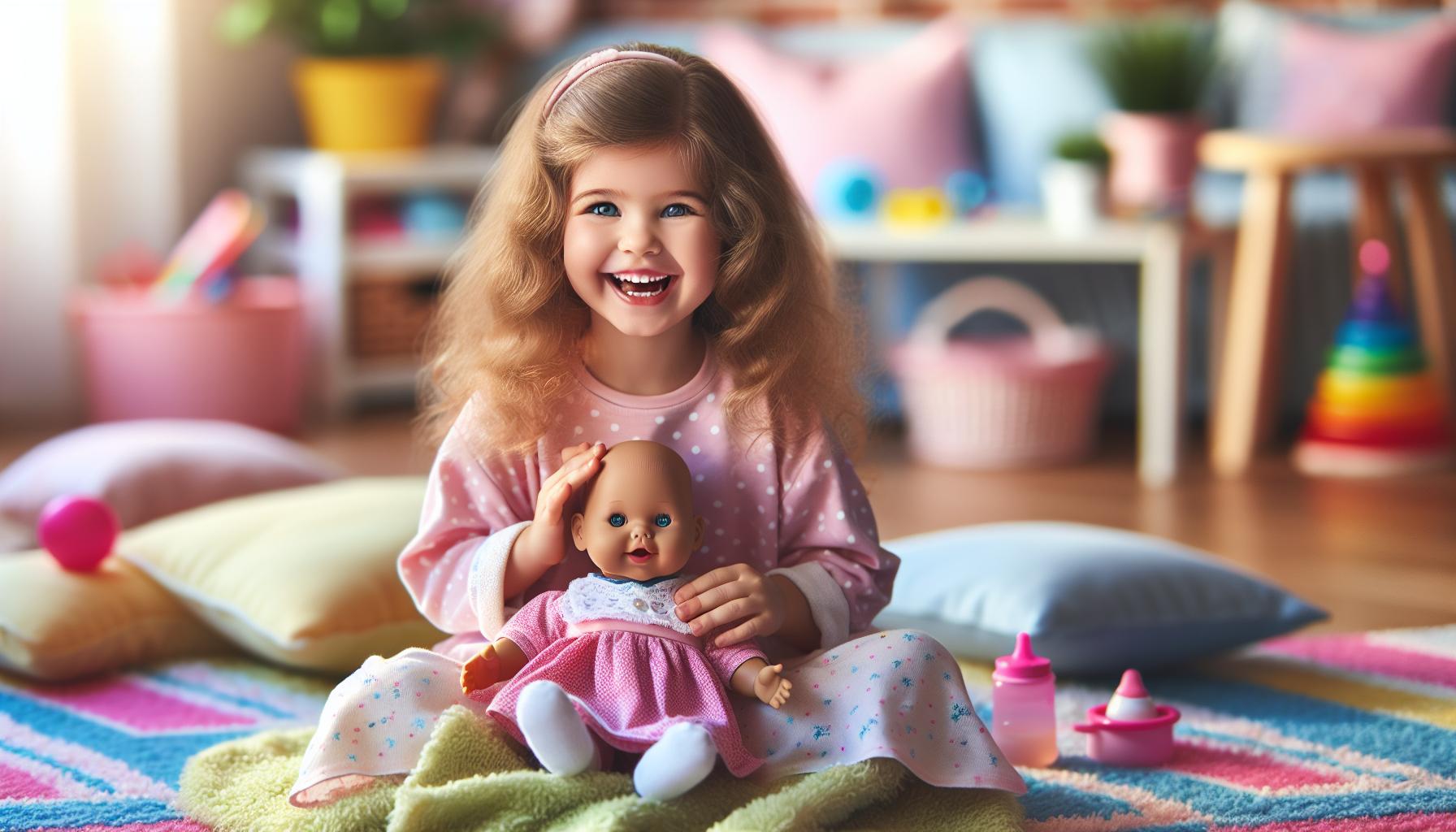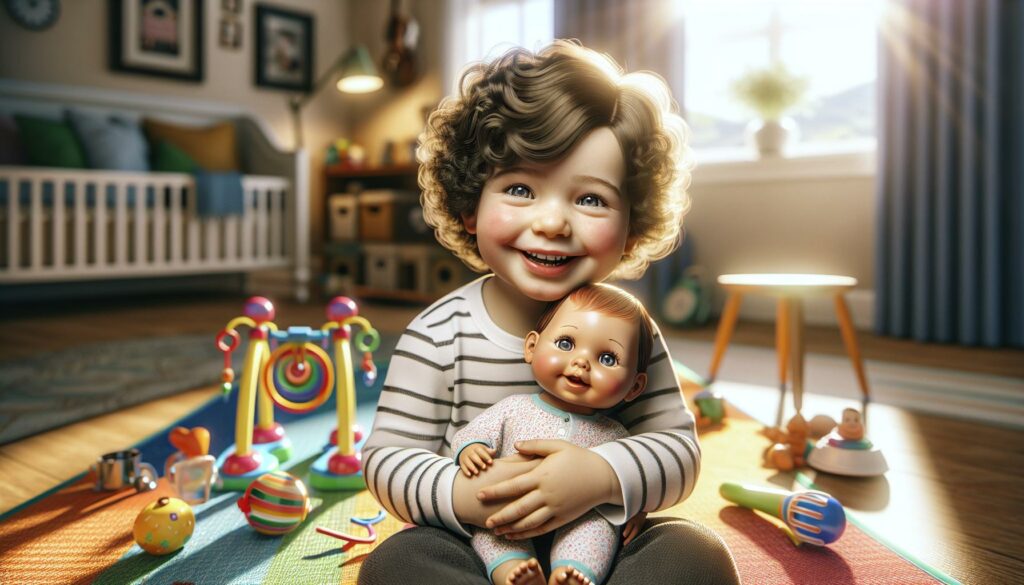When I think about child development, one of the most powerful tools in a child’s growth is often overlooked: the baby doll. These seemingly simple toys play a crucial role in nurturing empathy and social skills. As children engage in imaginative play with baby dolls, they learn to express emotions and understand the feelings of others.
Baby dolls aren’t just playthings; they’re gateways to developmental milestones. Through caring for their dolls, kids practice responsibility and develop fine motor skills. I’ve seen firsthand how these interactions can spark creativity and boost confidence in young children. Let’s dive into the fascinating world of baby dolls and explore how they contribute to a child’s emotional and cognitive development.
Key Takeaways
- Emotional Development: Baby dolls help children articulate feelings and explore emotions through caregiving and nurturing play.
- Social Skills: Engaging with dolls fosters cooperative play, enhancing communication, teamwork, and problem-solving abilities.
- Responsibility Teaching: Caring for baby dolls instills a sense of responsibility, teaching children about routines like feeding, dressing, and comforting.
- Physical Growth: Manipulating dolls improves fine motor skills and promotes balance, core strength, and independence in children.
- Variety Matters: Different types of baby dolls, such as classic and interactive dolls, offer unique developmental benefits tailored to various age groups.
- Choosing Wisely: Selecting age-appropriate dolls with safe materials and engaging features can maximize the developmental advantages for children.
Child Development Baby Doll
Child development baby dolls play a vital role in the emotional and cognitive growth of children. These dolls offer various benefits, facilitating imaginative play and fostering important life skills. Through role-playing scenarios, children learn how to express emotions, develop empathy, and build social skills.
Key developmental benefits include:
- Emotional Expression: Baby dolls help children articulate feelings by simulating caregiving and nurturing behaviors. This interaction enables them to explore their emotions in a safe environment.
- Social Skills: Engaging with dolls encourages cooperative play, fostering communication and teamwork among children. Sharing, taking turns, and negotiating roles become essential aspects of their play.
- Responsibility: Caring for a baby doll teaches children about responsibility. They learn routines such as feeding, dressing, and comforting, enhancing their understanding of caregiving.
- Creative Thinking: Imaginary scenarios with baby dolls stimulate creativity. Children create stories and situations, enhancing their problem-solving skills and imaginative capabilities.
These dolls serve as essential tools for fostering developmental milestones, equipping children with the skills needed for future interactions and relationships.
Benefits of Child Development Baby Dolls

Child development baby dolls offer various benefits that are crucial for a child’s growth. They facilitate learning through play and promote essential skills that shape future interactions.
Physical Development
Baby dolls encourage physical development by enhancing fine motor skills. Children dress, undress, and care for dolls, practicing hand-eye coordination and dexterity. Manipulating small objects like clothes and accessories strengthens finger muscles. Carrying and holding dolls fosters balance and core strength, essential for overall motor abilities. These activities not only support physical growth but also promote independence as children master tasks.
Social and Emotional Development
Baby dolls significantly boost social and emotional development. Role-playing scenarios allow children to express feelings and navigate complex social situations. Through nurturing interactions, they develop empathy and understanding of others’ emotions. Engaging in cooperative play with peers strengthens communication skills, fostering teamwork and conflict resolution. Caring for a doll instills a sense of responsibility, as children learn the importance of caregiving. These emotional and social experiences build confidence and prepare children for meaningful relationships in the future.
Popular Types of Child Development Baby Dolls

Child development baby dolls come in various forms, each offering unique benefits and catering to different aspects of a child’s growth. Understanding these types helps parents choose the most suitable dolls for their children’s developmental needs.
Classic Baby Dolls
Classic baby dolls frequently feature simple designs, often resembling infants. These dolls encourage imaginative play, allowing children to engage in nurturing scenarios. Through dressing, feeding, and caring routines, classic baby dolls help children practice empathy and responsibility. For example, a child caring for a classic doll can learn to communicate feelings and develop caregiving skills early on. These dolls are often made from soft materials, promoting comfort and safety during play.
Interactive Baby Dolls
Interactive baby dolls integrate technology to respond to children’s actions. They can react to touch, speak, or even learn a child’s name, enhancing the play experience. These dolls support children’s emotional development by simulating real-life caregiving situations. For instance, when a child feeds or plays with an interactive doll, the doll’s responses help reinforce language development and social skills. These dolls often include features like sensors and sound, making them engaging and educational tools for fostering connection and learning.
How to Choose the Right Child Development Baby Doll

Selecting the right child development baby doll involves understanding specific criteria that meet a child’s growth and engagement needs. Focusing on age appropriateness and essential features can make the selection process straightforward.
Age Appropriateness
Choosing a baby doll that matches a child’s developmental stage is crucial. For infants and toddlers, soft, lightweight dolls with no small parts benefit safety and comfort. These dolls are easy to grasp, promoting hand-eye coordination. For preschoolers aged 3 to 5, more detailed dolls with added features encourage imaginative play and role-playing scenarios. Dolls designed for school-aged children (ages 6-8) often include interactive elements or address specific themes that align with their cognitive advancements. Always check age recommendations on the packaging to ensure suitability.
Features to Consider
Some features enhance the play experience and support development. Look for:
- Material: Opt for non-toxic, washable materials to ensure safety and easy maintenance.
- Size: Select a doll size that fits comfortably in a child’s arms, which encourages both imaginative play and physical development.
- Realism: Choose dolls that resemble real babies to promote empathy and caregiving responsibilities.
- Interactivity: Interactive dolls can respond to touch or voice, advancing emotional intelligence and language skills.
- Accessories: Dolls that come with clothing, feeding gear, or other accessories encourage responsibility and foster imaginative scenarios.
Considering these factors ensures the chosen baby doll significantly contributes to a child’s emotional, social, and physical development.
Child’s Growth Journey
Choosing the right child development baby doll can make a world of difference in a child’s growth journey. These toys aren’t just playthings; they’re essential tools that foster emotional intelligence and social skills. I’ve seen firsthand how children thrive when they engage in nurturing play, developing empathy and responsibility while having fun.
When selecting a baby doll, it’s crucial to consider your child’s age and developmental stage. By focusing on features that enhance safety and interactivity, you can ensure that the doll supports your child’s unique needs. Ultimately, investing in a quality baby doll can pave the way for meaningful relationships and a well-rounded development in your child’s life.

